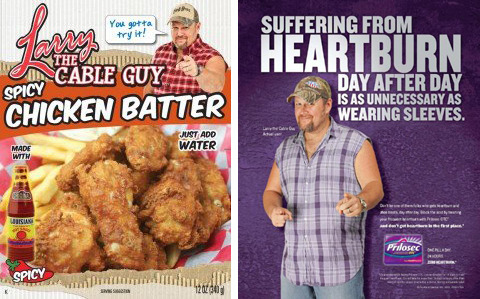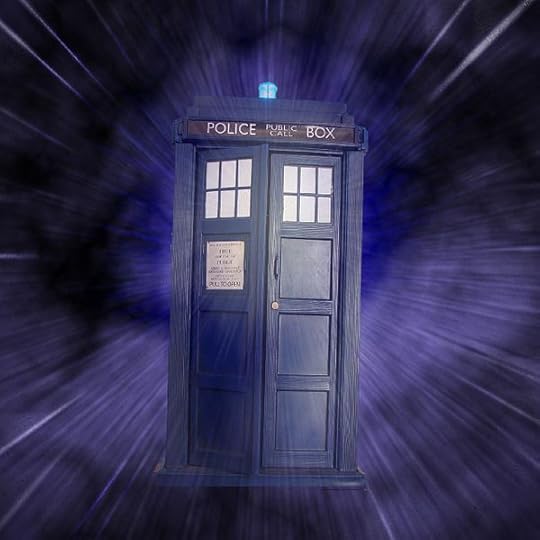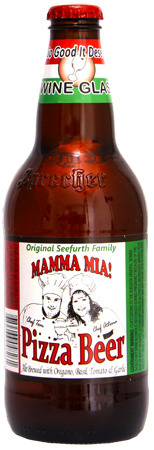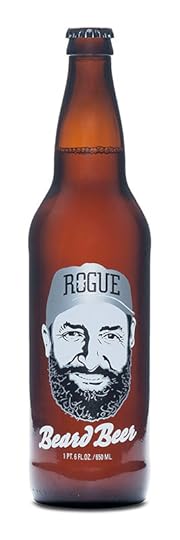Bathroom Readers' Institute's Blog, page 158
October 28, 2013
The Rarest “45” Of All Time
How a forgettable pop song became a priceless collector’s item—“American Memories” is the rarest 45 of a song to have ever made the Billboard pop chart.
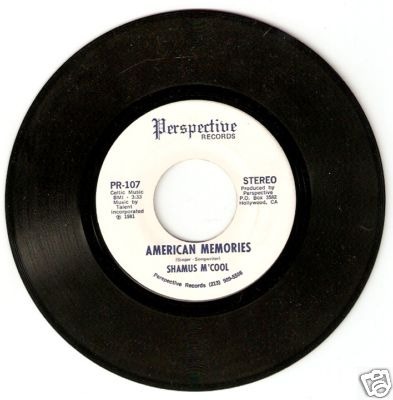 Richard Doyle was a standup comedian from Los Angeles who hosted a show on local TV called Comic Talk, where he interviewed other comedians that were part of that city’s rising comedy scene. Doyle was also a musician—in 1973, under the name “Shamus M’Cool,” his Christmas novelty song “Santa’s Little Helper, Dingo” hit #11 on Billboard’s seasonal holiday music chart.
Richard Doyle was a standup comedian from Los Angeles who hosted a show on local TV called Comic Talk, where he interviewed other comedians that were part of that city’s rising comedy scene. Doyle was also a musician—in 1973, under the name “Shamus M’Cool,” his Christmas novelty song “Santa’s Little Helper, Dingo” hit #11 on Billboard’s seasonal holiday music chart.
That was the only musical success Doyle had had, but in 1981, he decided to revive his musical career, as well as the “Shamus M’Cool” stage name. He recorded a country rock song called “American Memories,” which wasn’t a comic novelty song at all—it was a look back on triumphant, proud memories in American history. (The B-side: “American Humor,” six-minutes of Ronald Reagan jokes from Doyle’s comedy act, recorded live at the Playboy Club.)
Doyle recorded the song himself and released it on his own record label, Perspective records. Hoping to build on his status as a local celebrity, Doyle made a very small pressing of “American Memories”—10 copies—and sent them to a handful of Los Angeles radio stations. Two stations reportedly added it to their playlists, and for one week in June 1981, “American Memories” entered the Billboard Hot 100 at #80. How? Los Angeles is the second-largest media market in the country (behind New York), and if multiple stations in a large market play a song, even if nowhere else in the country is playing it, it can reach the lower rungs of the national pop chart, at least it could in 1981.
After entering and peaking at #80, “American Memories” dropped off the Hot 100. What happened? The same program directors who told Doyle they’d play “American Memories” went on vacation, and weren’t around to push “American Memories.” The song faded away, and Doyle reportedly became embittered by the experience. He never recorded music again and died in 1990 at age 49.
But “American Memories” lives on. A 45 of the song is one of the most difficult to obtain records in the world, and is undoubtedly the rarest physical copy of any song that’s ever made the national pop chart. The only pressed copies were the ones Doyle made himself from his own record label, and he sent the majority to radio stations, saving a couple back for himself. If you ever find one in a secondhand store, snap it up—copies have sold on eBay for as much as $3,000.
October 25, 2013
Return of the Attack of the Pumpkin-Flavored Food Monsters!
The leaves are changing color, the air is getting crisp, and everything at the grocery store suddenly has pumpkin in it, whether it works or not. It must be fall!
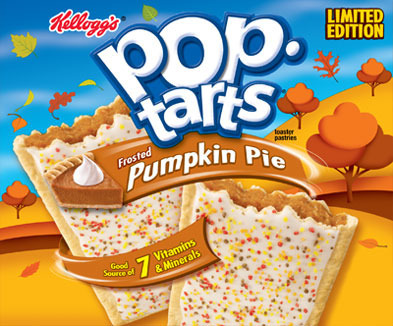 If you’ve been inside a grocery store or restaurant in the last couple of weeks, you’ve probably noticed the proliferation of pumpkin-flavored items. It’s been slowly building to cultural phenomenon levels since 2003. That’s when Starbucks introduced the Pumpkin Spice Latte—coffee, milk, and a syrup flavored with pumpkin, cinnamon, nutmeg, and sugar. More than 200 million of the drinks have sold in the past 10 years, prompting other food manufacturers and sellers to unveil their own pumpkin-flavored concoctions. And it’s working: pumpkin products rake in more than $290 million every autumn.
If you’ve been inside a grocery store or restaurant in the last couple of weeks, you’ve probably noticed the proliferation of pumpkin-flavored items. It’s been slowly building to cultural phenomenon levels since 2003. That’s when Starbucks introduced the Pumpkin Spice Latte—coffee, milk, and a syrup flavored with pumpkin, cinnamon, nutmeg, and sugar. More than 200 million of the drinks have sold in the past 10 years, prompting other food manufacturers and sellers to unveil their own pumpkin-flavored concoctions. And it’s working: pumpkin products rake in more than $290 million every autumn.
Here are just a few of the many pumpkin items currently available.
• Pumpkin Pie Pop-Tarts
• Individual deep-fried pumpkin pies at McDonald’s
• Dunkin’ Donuts offers a pumpkin pie donut, pumpkin muffins, pumpkin donut holes, and pumpkin spice coffee
• Pumpkin Spice Pringles
• Pumpkin-flavored M&Ms and Hershey Kisses
• Crop’s Spiced Pumpkin vodka
• Pumpkin Spice Kahlua
• Thomas pumpkin bagels and English muffins
• Philadelphia-brand Pumpkin Spice Cream Cheese
• “Jet-Puffed Pumpkin SpiceMallows”—pumpkin marshmallows
• Pumpkin Eggo Waffles
• Pastamaker Rossi sells pumpkin fettucine and ravioli
• Coffeemate pumpkin non-dairy creamer
• Jell-O Pumpkin Spice pudding mix
• Planters’ Pumpkin Spice Almonds
• Trader Joe’s is selling more than a dozen new pumpkin items this year, including pumpkin macarons, pumpkin butter, pumpkin oatmeal…and pumpkin dog treats
If you’d rather prepare your own pumpkin goodies, the October issue of Food Network Magazine contains a list of more than 50 things to do with canned pumpkin puree. There are old standbys, such as muffins and soup, as well as some more out-there options, such as pumpkin cucumber dip, quesadillas…and deviled eggs.
October 24, 2013
The Better Soup and iPod You Didn’t Know You Needed
Stuff you didn’t think needed to be improved…just got a little bit better.
A better iPod
 Introduced in 2001, Apple’s iPod revolutionized the way people listen to music—thanks to this and other digital music players, thousands of songs are stored as computer files on a pocket-sized device. But there’s one group who doesn’t like the easy access to music offered by the iPod: audiophiles. In order to get that much music on an iPod, the files are compressed, leading to some loss of layers and nuances in recordings. But a new high-definition, high-sound-quality music player called Pono is on the way—and it was invented by legendary rock star Neil Young. “We’ve liberated the music of the artist from the digital file and restored it to is original artistic quality, as it was in the studio,” Young wrote on Pono’s facebook page. Young announced the Pono player on The Late Show With David Letterman in 2012, and recently said that the player will be for sale in early 2014.
Introduced in 2001, Apple’s iPod revolutionized the way people listen to music—thanks to this and other digital music players, thousands of songs are stored as computer files on a pocket-sized device. But there’s one group who doesn’t like the easy access to music offered by the iPod: audiophiles. In order to get that much music on an iPod, the files are compressed, leading to some loss of layers and nuances in recordings. But a new high-definition, high-sound-quality music player called Pono is on the way—and it was invented by legendary rock star Neil Young. “We’ve liberated the music of the artist from the digital file and restored it to is original artistic quality, as it was in the studio,” Young wrote on Pono’s facebook page. Young announced the Pono player on The Late Show With David Letterman in 2012, and recently said that the player will be for sale in early 2014.
More convenient soup
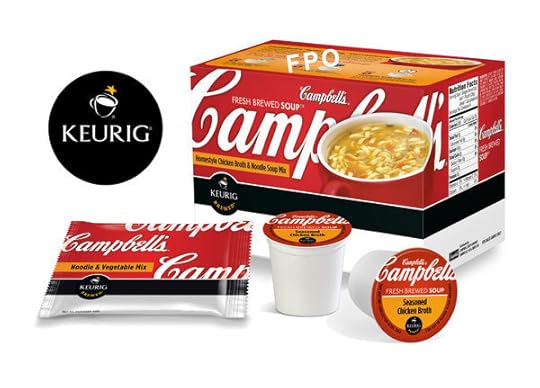 One of the most popular new kitchen appliances in the past new years is the single-cup coffeemaker—17 million American homes and offices now have them. Keurig is the industry leader in these devices, which brew one cup of coffee—or tea, or hot chocolate—at a time. Consumers buy packages of individual “K-cups” full of ground coffee, which is placed in a chamber in the machine, where it’s then steeped in hot water, producing a hot beverage in about a minute. In September 2013, Keurig owner Green Mountain Coffee Roasters announced that it had made a deal with Campbell’s to produce K-cups…of soup. In 2014, consumers will be able to buy the two-step soup kits: a K-cup full of dried broth is placed in the machine. Hot water turns the dried broth into liquid broth, which is then poured over an included pack of noodles.
One of the most popular new kitchen appliances in the past new years is the single-cup coffeemaker—17 million American homes and offices now have them. Keurig is the industry leader in these devices, which brew one cup of coffee—or tea, or hot chocolate—at a time. Consumers buy packages of individual “K-cups” full of ground coffee, which is placed in a chamber in the machine, where it’s then steeped in hot water, producing a hot beverage in about a minute. In September 2013, Keurig owner Green Mountain Coffee Roasters announced that it had made a deal with Campbell’s to produce K-cups…of soup. In 2014, consumers will be able to buy the two-step soup kits: a K-cup full of dried broth is placed in the machine. Hot water turns the dried broth into liquid broth, which is then poured over an included pack of noodles.
October 23, 2013
Ironic, Isn’t It?
Nothing like a dose of irony to keep your day-to-day problems in perspective.
Ironic spokesman. The image of popular stand-up comedian Larry the Cable Guy adorns lots of products—he’s even got his own line of snack chips as well as boxed dinner mixes, including cheesy mashed potatoes, beer bread, cheeseburger macaroni, and fried chicken batter. These obviously aren’t health foods. More than that, overindulgence in these kinds of foods can lead to heartburn. Fortunately, you can take a pill for that, such as Prilosec OTC. What celebrity endorses Prilosec OTC in TV commercials? Larry the Cable Guy.
Ironic refund. Beginning in 2001, the Walt Disney Company distributed a line of educational videos for babies called Baby Einstein. The 30-minute videos of puppet shows, abstract images, nature footage, and famous works of art, were scored to a classical music soundtrack and interspersed were vocabulary segments to help babies learn new words. In 2009, Disney offered refunds to parents who had purchased Baby Einstein videos after a 2007 study found that watching TV and videos as an infant may inhibit brain development. Another study showed that kids who regularly watched Baby Einstein videos actually learned fewer words by kindergarten that those who hadn’t watched the tapes.
Ironic stardom. Norwegian comedy duo Ylvis—brothers Vegard and Bard Vylisaker—host a comedy show in Norway called Tonight with Ylvis. In 2012, Ylvis took the show to the central Asian country of Kyrgyzstan in a joke attempt to become pop stars there. They told Spin that they did it there because “we’d never become pop stars in the U.S., so we chose another country where it would be easier.” Despite relentlessly promoting themselves, Ylvis did not catch on in Kyrgyzstan. “The whole humor is that we didn’t succeed and had lots of obstacles.” But this year, Ylvis did actually become pop stars in the U.S. Their silly novelty song “The Fox (What Does the Fox Say)” is a top 10 hit. They’ve performed on Late Night With Jimmy Fallon and the video for “The Fox” has racked up more than 124 million views on YouTube.
Ironic dog food. In 1957, Disney produced a movie version of Fred Gipson’s 1956 award-winning children’s book Old Yeller. You probably know the story—a boy loves his dog, but eventually has to shoot it when he becomes infected with rabies. In 2010, the Kroger chain of grocery stores licensed the rights from Disney to use Old Yeller…as the name of its store-brand of dog food. It gets worse: Later that year, a batch of Old Yeller was found to be laced with aflatoxin, a fungus that crows on corn that, when ingested by dogs, leads to vomiting, diarrhea, and jaundice. Kroger issued a recall.
October 22, 2013
Right Protest, Wrong Place
This is America, and you have the right to voice your displeasure with someone or something.
Just make sure you address the correct people.
The most controversial moment at the 2013 MTV Video Music Awards: a performance by Robin Thicke and former child star Miley Cyrus. Cyrus, dressed in little more than a bikini, “twerked” with Thicke—suggestively rubbing up against the singer. The FCC received 161 complaints about the broadcast, the most regarding a single event since Janet Jackson’s 2004 Super Bowl “wardrobe malfunction.” A few complaints: “She has the vast majority of her butt cheek hanging out of her bikini,” “Obscene, slutty, indecent,” and “Miss Milly Cyrus should be fined and jailed for performing such sexually provocative material on TV.” Did the FCC punish MTV, Cyrus, Thicke, or cable TV providers? Nope. The FCC doesn’t have any jurisdiction over cable TV—only over-the-air, free, broadcast TV.
Hooray, Paula Deen!
In a lawsuit filed earlier this year against TV chef and cookbook author Paula Deen, it was alleged that Deen had, many years ago, uttered racial slurs and racist comments. Deen admitted it, but denied she was a racist. Nevertheless, Food Network announced they wouldn’t renew her contract. Deen’s most devoted fans, however, thought that she was being unfairly maligned, and sent thousands of emails and phone calls to express their support. Except that a lot of those messages were sent not to Deen’s former employer, Food Network, but to The Food Channel, a Missouri production company that makes cooking segments and shows syndicated to TV stations around the country. “We’ve been getting your emails. Your phone calls. We get that you are mad about her contract not being renewed. The problem is, you are calling and writing the wrong people,” the Food Channel said on its website.
Boo to United Airlines
Lots of corporations have Twitter accounts where displeased customers can issue their concerns and get through to a real customer service representative in real time. Airlines receive lots of complaints, and irate United Airlines customers routinely register via Twitter their anger over missed flights and bad pilots. Except that in 2013, many angry flyers starting writing to @UnitedAirlanes, a fake, parody of a United Airlines customer service Twitter (note the spelling of that Twitter handle). And the operator sarcastically responds, which probably only makes angry customers angrier. A couple exchanges:
Customer: “This flight crew is incompetent can’t load the plane, horrible service”
@UnitedAirlanes: “You should see our crews load a T-shirt bazooka, though. Ralfio can in seconds. He can even hit business class from the cockpit!”
Customer: “Food you should feed to the dog and staff that don’t care!”
@UnitedAirlanes: “Did you eat the food? You’re not supposed to actually eat the food.”
October 21, 2013
Whatever Happened to the Singing Nun?
The strange and sad saga of one of pop music’s least likely hitmakers.
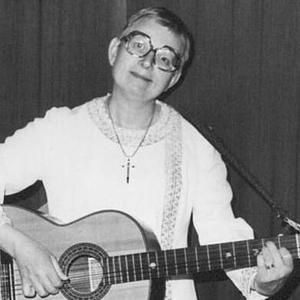 Belgian-born, French-speaking Jeanine Deckers joined The Fichermont Convent in 1959 at the age of 26. Upon taking her vows, she adhered to the custom of picking a new name: Sister Luc-Gabrielle. Living at the convent, she passed the time by entertaining the other nuns with songs about Catholic saints that she wrote and performed on her acoustic guitar.
Belgian-born, French-speaking Jeanine Deckers joined The Fichermont Convent in 1959 at the age of 26. Upon taking her vows, she adhered to the custom of picking a new name: Sister Luc-Gabrielle. Living at the convent, she passed the time by entertaining the other nuns with songs about Catholic saints that she wrote and performed on her acoustic guitar.
The superiors at the convent thought Sister Luc-Gabrielle should make a limited-press album—they could sell those records of original religious songs to people who visited the convent or who attended their religious retreats. The convent booked time for the sister at Philips Studio in Brussels in 1962. While it’s fairly common for church choirs or religious performers to self-release an album, then and now, the engineers at Philips thought Sister Luc-Gabrielle was more than just another church singer—they thought her gentle, lilting folk songs could make her a pop star. So they signed her to a contract, and presented her to the public as Soeur Sourire, or “Sister Smile.”
The engineers at Philips were right. In 1963, Soeur Sourire’s “Dominique” was released as a single in Belgium. About St. Dominic, the 13th century founder of the Dominican order, and sung in French, it became a #1 hit all over Europe, even where French wasn’t widely spoken. It was so big it crossed over to the U.S. in late 1963. Radio programmers at the time were eager to fill the air with the gentlest music they could find, aiming to soothe Americans after the assassination of President Kennedy.
“Dominique” went to #1 in the U.S. She was still billed as Soeur Sourire…although everybody just called her “the Singing Nun.” She embarked on a worldwide tour, appeared on The Ed Sullivan Show, and her album Her Joys, Her Songs sold two million copies. Deckers’ cut of the proceeds went directly to her convent.
It was almost inexplicable that a nun singing a song in French about a Catholic saint could have been a #1 single. So much so that Soeur Sourire couldn’t repeat the feat. After “Dominique” mania calmed down and Her Joys, Her Songs produced no more hits, the convent sent Deckers to receive secondary theology training. There, she became reacquainted with an old childhood friend named Anne Pelcher. In 1966, Deckers and Pelcher went to Africa to do social work and became lifelong companions.
In 1968, Deckers further distanced herself from her religious life. She was an outspoken critic of the Catholic Church’s anti-contraception stance, publicly supporting birth control with an attempted comeback single called “Glory Be to God For the Golden Pill.” The song was not a hit.
The controversy surrounding the song (and rumors that Deckers and Pelcher were romantically involved) led to Deckers being ousted from her convent. In the 1970s, she attempted to jumpstart her musical career with a children’s album of religious and secular songs called I Am Not a Star in Heaven, under the name “Luc-Dominique,” allegedly because her old convent owned the rights to the name Soeur Sourire. The album flopped.
By 1982, Deckers was broke, yet owed the Belgian government thousands in unpaid back taxes over royalties from “Dominique.” Deckers claimed that since her convent took that money, then they should pay the taxes on it. The convent disagreed— because they were just a poor, struggling convent and didn’t have the money. Deckers was ruled to be on the hook for $63,000 in back taxes. In a quick-cash-grabbing move, Deckers recorded yet another would-be comeback single: “Dominique”—a synthesizer-heavy disco version of her only hit.
That comeback didn’t work either, and Deckers fell farther into debt. Sadly, she and Pelcher committed suicide together in 1985.
Most of these controversial details were not included in The Singing Nun, a highly fictionalized version of Deckers’ life released in 1966 and starring Debbie Reynolds.
October 18, 2013
Doctor Who?
In recent years, the British sci-fi legend Doctor Who has enjoyed a resurgence
in popularity in the U.S and the U.K. Still, most Americans know little about the Doctor.
With the 50th anniversary celebration coming up, it is time to catch up. Here are a
few facts to get you going.
Doctor Who premiered on England’s BBC One on November 23, 1963, and has aired almost continuously ever since (although new episodes weren’t produced between 1989 and 2005), making it by far the longest-running science-fiction program on television. With 798 episodes and counting, it’s among the longest-lasting prime-time dramas as well.
In the 1970s, it was one of the first British series to air on American TV and became a cult hit. And in England, it’s a popculture phenomenon—it’s spawned radio series, novels, and several tie-in movies. Eavesdrop for long enough in any British pub, and you’ll hear patrons arguing over who the best Doctor was. In both countries, Doctor Who has had a substantial influence on television. Here’s a primer: The premise. The Doctor (who is known only as “the Doctor”) is the last of a race called the Time Lords, who are near-omnipotent, hyperintelligent, and keep a strict non-intervention policy—a law the Doctor breaks when he sets out to explore the universe. Along with a human companion (usually a teenager or young woman), the Doctor travels through time and space.
The TARDIS. This time-travel machine (an acronym for “Time and Relative Dimension in Space”) resembles a telephone booth on the outside. On the inside, it’s the size of several rooms. (Producers originally planned for the TARDIS to change shape and blend with its surroundings wherever it landed, but their paltry budget precluded building a new TARDIS each week, so the phone-booth format was made permanent.)
The Doctor. The role was originated by William Hartnell, who portrayed the Doctor as a cantankerous old man. Three years into the role, however, Hartnell grew ill and had to quit the show.
Rather than end the series, script editor Gerry Davis came up with the idea that the Doctor could “regenerate” when he grows old or gets injured. That conceit has allowed for lead actors to come and go every few years, contributing to the show’s longevity. To date, 11 actors have portrayed The Doctor.
The Daleks. The Doctor is pursued by this evil race of mutant aliens, who wear conical metallic suits that make them look like big pepper shakers. They yell “Exterminate!” before blasting their foes with ray guns. (The Doctor doesn’t carry a gun—only a “sonic screwdriver.”) One of the charms of Doctor Who is its cheesy special effects and low-budget soundstage sets, but that’s something the show’s creator—BBC head of drama Sydney Newman—didn’t intend: He wanted Doctor Who to be an educational show to teach kids science. But the Daleks, introduced in 1963, proved so popular that the show settled into a serialized drama format. It was soon a Saturday-night ritual for kids and adults alike.
POPULARITY AND DEMISE
The series’ peak of popularity was from 1974 to 1981 in both the U.K. and U.S. (It was reportedly PBS’s most-watched series.) Its success was due in part to Tom Baker, the curly-haired Doctor with a trademark scarf and witty, exasperated attitude. Ratings hit a high of 16 million viewers in 1979, then slid steadily after Baker “regenerated” into Peter Davison. There was an 18-month production hiatus from 1985 to 1986, and with regular viewers at just three million in 1989, the BBC canceled Doctor Who after 26 years and 697 episodes.
REGENERATION
But Doctor Who didn’t go away. The cottage industry of Who radio specials, albums, video games, and merchandise still attracted millions of fans. So, in 1996, the BBC decided to revive it, and to do so in a big way: in the U.S. and the U.K. at the same time. The BBC co-produced a flashy, well-funded made-for-TV movie with the Fox network to serve as a pilot for a new series, although it was technically a continuation of the old series. The May 1996 broadcast was heavily hyped by Fox, but ratings were poor in the United States (it aired against ABC’s Roseanne).
It fared better in the United Kingdom—nine million viewers tuned in—but since Fox paid for the majority of the production, they got the say-so on whether to continue the series, and decided not to. The immortal Doctor looked to stay dead.
But the BBC became interested in Doctor Who again in 2003, as the show approached its 40th anniversary. Retrospectives in print and on television inspired them to relaunch Doctor Who.
Debuting in 2005, with Christopher Eccleston as the roguish Doctor, the series was updated for the new millennium—filmed in high definition on location instead of in a studio, with a bigger budget and better special effects. David Tennant took over as the Doctor from 2005 to 2010, then Matt Smith took the reins as the 11th Doctor. After his retirement in 2014, Peter Capaldi will pick up as the 12th Time Lord. Also, it was recently confirmed that 90 of the 106 episodes lost since the 1960s have been recovered.
October 17, 2013
6 More Weird Beers
You asked for another round of weird beers, so we’ll keep ‘em coming.
Algae beer
Ever had green beer at St. Patrick’s Day? That’s just everyday beer with green food coloring added to it. But this green beer is green because it’s made with spirulina—a living organism that’s found in blue-green algae. Freetail Brewing in San Antonio says the algae infuses the beer with not only color, but vitamins and a “tropical fruit” taste.
Mamma Mia! Pizza Beer is brewed with basil, oregano—the same spices found in or on a pizza, along with garlic and the same kind of wheat commonly used to make pizza crust, and tomatoes. The result is a meal in a glass…sort of.
Peanut butter and chocolate beer
There are lots of nutty beers out there, with hazelnuts, chestnuts, and pecans adding flavor to everything from light ales to thick stouts. Porter is a kind of beer characterized with notes of chocolate and coffee. Willoughby Brewing adds peanuts to the brewing process, which results in a beer that tastes like coffee, chocolate, and peanut butter.
Ice cream beer
Japanese brewery Kirin came up with an idea to freeze the foamy head off of beer and then dispenses it out of a machine, like frozen yogurt or soft serve ice cream, at 23 degrees Fahrenheit and pumped up with air. It looks like and has the consistency of ice cream, but when placed on top of a beer, it keeps the drink beneath ice-cold for up to half an hour.
Space beer
Celest-Jewel-Ale (say it out loud: “celestial”) is made by Dogfish Head Brewery in Delaware. How does it taste? It’s out of this world, because it’s flavored with minerals and salts made from crushed-up moon rocks. It was available only in limited quantities (already sold out), and only at Dogfish’s brewpup in Rehoboth Beach, Delaware, but it did come with a special “koozie” to go around the glass—it was made by ILC Dover, a Delaware-based company that makes temperature-resistant space suits for NASA astronauts. (Dogfish Ale should team up with Japanese brewer Sapporo. In 2009, that company made a short run of beer made with barley that was grown on the International Space Station.)
Drinking too much beer can make you sick—but just reading about this one might make you want to wretch. John Maier is the brewmaster at Rogue Ales in Oregon, known for crafting both award winning beers and experimental new flavors, like bacon-maple and chipotle pepper. Maier has worn a long beard since 1983, and has spent a lot of time brewing beer. He theorized that his beard might have picked up a lot of yeast, or yeasts, over the years, and that he might be able to use that yeast to ferment beer. He was right—the harvest yeast was used to make “The Beard Beer.” It’s said to taste like bananas and pineapple (and who knows what else).
October 16, 2013
It’s National Boss Day
Today is your day to shine, brown-nosers!
 Looking for an excuse to cozy up to your superiors and put yourself in the front of the line for that promotion and/or make your coworkers look bad? Then get ready to celebrate National Boss Day. It’s actually been around for over 50 years, but is not widely celebrated for reasons you can probably figure out (it involves buying your boss a present, so there’s one factor).
Looking for an excuse to cozy up to your superiors and put yourself in the front of the line for that promotion and/or make your coworkers look bad? Then get ready to celebrate National Boss Day. It’s actually been around for over 50 years, but is not widely celebrated for reasons you can probably figure out (it involves buying your boss a present, so there’s one factor).
The person behind this holiday did have good intentions. National Boss Day was created in 1958 by Patricia Bays Haroski, an employee at a State Farm Insurance branch in Deerfield, Illinois. She registered the holiday with the U.S. Chamber of Commerce in order to not only honor all the hard-working managers out there but to also help improve relations between them and their underlings. (And probably, we’re guessing, to impress her boss.)
Haroski picked October 16 because it was her boss’s birthday, a boss who just so also happened to be her father. She was working for him at the time. As she explained later, “Reflecting on how my father had helped his white collar daughters and sons many times with their problems concerning their work, I decided to register his birthday.” In 1962, Illinois governor Otto Kerner, Jr. declared it an official state holiday.
The holiday is also observed in other countries including Australia, Ireland, and South Africa. Hallmark even sells cards to mark the occasion.
October 15, 2013
6 Interesting Things About the New Fall TV Season
What everybody’s watching…and decidedly not watching.
 • The Millers is a hit new comedy for CBS on Thursday nights. It starts Will Arnett and Margo Martindale, who are best known for, respectively, the Emmy-winning comedy Arrested Development and the Emmy-winning drama Justified. Neither of those shows ever brought in a huge audience. The premiere of The Millers attracted 13.09 million viewers, which is more than the most-watched episode of Arrested Development (7.98 million) and the most-watched episode of Justified (4.16 million) combined.
• The Millers is a hit new comedy for CBS on Thursday nights. It starts Will Arnett and Margo Martindale, who are best known for, respectively, the Emmy-winning comedy Arrested Development and the Emmy-winning drama Justified. Neither of those shows ever brought in a huge audience. The premiere of The Millers attracted 13.09 million viewers, which is more than the most-watched episode of Arrested Development (7.98 million) and the most-watched episode of Justified (4.16 million) combined.
• The Big 4 broadcast networks don’t air many family sitcoms anymore. But the Disney Channel does. One of them is called Dog With a Blog. It’s about a family with a dog, and the dog…writes a blog. In early October, 3.5 million viewers tuned in to Dog With a Blog. That’s 400,000 more people than tuned in to that week’s episode of NBC’s Parks and Recreation.
• Super Fun Night is a new comedy hit for ABC for two reasons: 1) It stars Rebel Wilson, from Bridesmaids and Pitch Perfect, and 2) It’s on immediately after Modern Family. This show has been in the works for almost two years. Wilson created the series and filmed a pilot in late 2011, which ABC turned down. They asked Wilson to try again, so she rewrote the script and filmed another pilot in 2012. The network didn’t like that attempt either, but still picked up the show to series and filmed a third pilot episode. That one wasn’t very good either, because ABC refused to air it. The first episode of Super Fun Night was actually the show’s second installment.
• TV reporters predicted one of the biggest new hits of the year would be The Michael J. Fox Show, which marked Michael J. Fox’s return to television after quitting Spin City in 2000 because of increasingly severe symptoms of Parkinson’s disease. In a bidding war with ABC and Fox for the show, NBC won by promising Fox and the show’s producers by committing to a full, 22-episode season before a pilot was filmed, or even written. So far, it hasn’t been the hit reporters or NBC expected.
• The biggest TV news story of the fall: the Breaking Bad finale. (If you haven’t seen it, don’t worry – we won’t spoil it for you.) A week after winning the Emmy Award for Best Drama Series, the five-year-old series wrapped up all of its plotlines in a critically acclaimed finale watched by more than 10 million people. Dreamworks Animation president Jeffrey Katzenberg wanted more Breaking Bad. He wanted to approach the show’s producers and offer them $75 million to produce just three new episodes. Katzenberg then planned to break up those episodes into 30 six-minute segments, release them to the Internet one-per-day for a month and charge a dollar each. Katzenberg decided not to go through with it.
• A few shows have already been cancelled: ABC’s lottery drama Lucky 7 (which had ABC’s lowest drama premiere ever), CBS’s comedy We Are Men, and Fox’s animated Murder Police…which hadn’t even aired a single episode yet.

